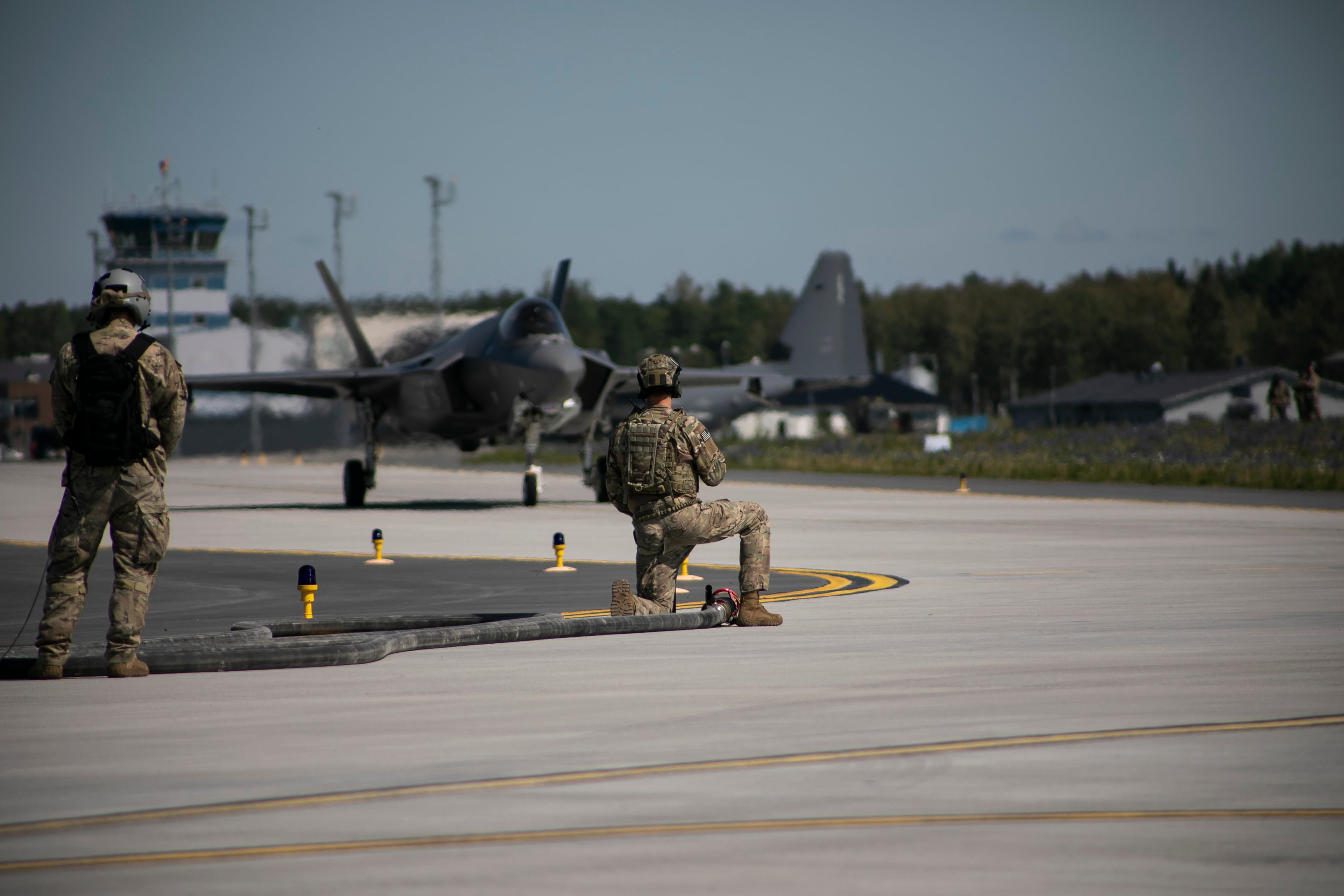NATIONAL HARBOR, Md. — The transfer of funding from U.S. Air Force construction projects in Europe to the U.S.-Mexico border wall will give the service additional time to evaluate whether it is pre-positioning equipment in the right locations, the commander of U.S. Air Forces in Europe said Tuesday.
About half of the $3.6 billion diverted to the border wall would have gone toward military construction projects abroad, including efforts tied to the European Deterrence Initiative, a special fund for projects meant to bolster the U.S. military’s presence in Europe and ward off Russian aggression.
The deferred funding impacts Air Force investments that would repair airfields, create staging areas for aircraft, or construct fuel and ammunition storage facilities in countries like Poland, Romania, Hungary and Slovakia. It also delays the construction of storage facilities where the service could pre-position “deployable airbase systems,” or DABS.
However, the deferral of those projects will not impede the Air Force’s training efforts in the region, said Gen. Jeffrey Harrigian.
RELATED

“I’m not overly concerned with where we’re at right now because we’ve been on a pretty successful journey on building out the areas that we will prioritize, and it has really occurred all across Europe,” he said during a roundtable at the Air Force Association’s annual conference.
"We’re going to continue to invest in that because it’s critical to the structure that we would need to be able to execute agile combat deployment. What I will tell you is that we are constantly looking at what are the best places to put those capabilities,” especially for construction projects tied to where weapons or airmen could be based, he added.
Harrigian didn’t expound on which specific projects could be moved to a more advantageous location.
The Air Force had planned to build DABS warehouses — which would store vehicles and other materiel needed to stand up an expeditionary airfield — in Spangdahlem Air Base, Germany; Sanem, Luxembourg; and Royal Air Force Fairford, England. All have been deferred.
During a July interview, Air Force Chief of Staff Gen. Dave Goldfein pointed to “base in a box” concepts like DABS as an example of how the service could better disperse operations in Europe and other regions such as the Asia-Pacific and Africa — a key concern for the service as it begins to think about how to fight a near-peer adversary like Russia or China.
“It has got to be really agile, it has to be as small a footprint as we can make it and it’s got to allow us to become operational within hours because the combatant commanders expect that their air component arrives first,” Goldfein said of DABS.
“That’s a muscle that we want to really exercise because we’ve had a rather mature infrastructure in the Middle East that we’ve been rotating out of for all these years, so we’ve sort of gotten used to having large main operating bases with infrastructure set. I want to make sure we’re ready for that but other contingencies as well."
In a December 2018 report, the Defense Department’s inspector general found that the Air Force is several years behind on producing DABS kits and constructing storage facilities.
Valerie Insinna is Defense News' air warfare reporter. She previously worked the Navy/congressional beats for Defense Daily, which followed almost three years as a staff writer for National Defense Magazine. Prior to that, she worked as an editorial assistant for the Tokyo Shimbun’s Washington bureau.








